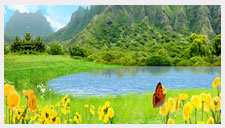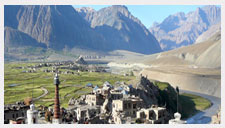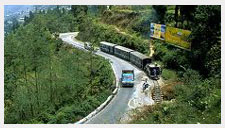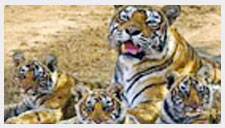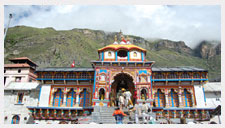About Kanha National Park
The lush sal and bamboo forests, grassy meadows and ravines of Kanha providedinspiration to Rudyard Kipling for his famous novel "Jungle Book". The Kanha National Park in Madhya Pradesh came into being in 1955 and forms the core of the Kanha Tiger Reserve, created in 1974 under Project Tiger. The Park's landmark achievement is the preservation of the rare hardground Swamp Deer (Barasingha), saving it from near extinction. Stringent conservation programs for the overall protection of the Park's fauna and flora, makes Kanha one of the most well maintained National Parks in Asia.
A heightened attraction within the Park is Bamni Dadar, popularly known as Sunset Point that offers the most awe-inspiring backdrop of the sunset against grazing Sambhars and Gaurs, magnifying the natural splendor of the area. Aside from its diverse wildlife and bird population, the frequent sightings of Tigers roaming in the wild at Kanha Wildlife Sanctuary remain the most popular draw.
How many of you have seen a tiger before? Most of the answers will be ambiguous because everyone wants to see a tiger. Then where can one spot TIGER? Well, even if there are circuses and zoo's all over India, there's some kind of a thrill you experiences when all of a sudden you came across a TIGER roaming freely in the wilderness of its natural habitat: the fields and forests of India. There are nucious beast,merous Tiger reserves in India, that are preserving this fero but nowhere can you see them as often, and as regularly as in Kanha National Park.
Major Wildlife Attractions Of Kanha
The main wildlife attractions in the park are tiger, bison, gaur, sambhar, chital, more pictures.... barasingha, barking deer, black deer, black buck, chousingha, nilgai, mouse deer, sloth bear, jackal fox, porcupine, hyena, jungle cat, python, pea fowl, hare, monkey, mongoose, tiger, and leopard.
The birds species in the park include storks, teals, pintails, pond herons, egrets, peacock, pea fowl, jungle fowl, spur fowl, partridges, quails, ring doves, spotted parakeets, green pigeons, rock pigeons, cuckoos, papihas, rollers, bee-eater, hoopoes, drongos, warblers, kingfishers, woodpeckers, finches, orioles, owls, and fly catchers.
However, if one animal species were to represent Kanha, it would probably be the barasingha, or the swamp deer. The barasinghas at Kanha are unique, being the hard ground variety, which populate the large open tracts of grass amidst the forests of teak and bamboo. Twenty years ago, the barasingha was faced with extinction but some desperate measures including the fencing-off of some animals helped save them and again the air in Kanha bugle with their rutting calls.
The open meadows during the cold winter months are usually teeming with barasinghas and there is plenty of tiger activity around the fringes. A female with two small cubs would circle around at least two or three times during the day and the swamp deer would go berserk, their husky alarm calls ringing through the jungle. Far from being the cunning, smart aleck, portrayed in Disney's adaptation of the Jungle Book, the real "Sher Khan" is true blue-blooded royalty.
There is a museum at Kanha depicting attributes and activities of the park and tribal culture. It is closed every Wednesday.













